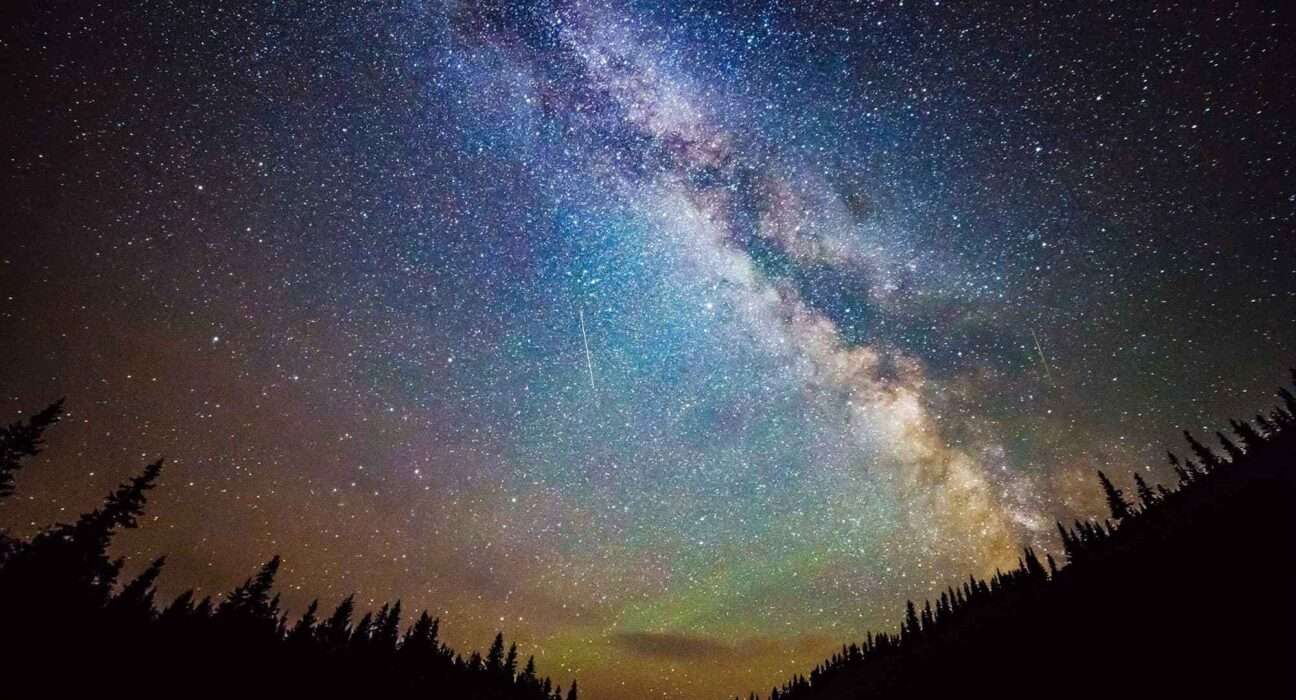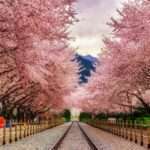As a child, I was fascinated by the twinkling stars in the night sky. Growing up in a bustling city, stargazing was not something I got to experience very often. However, during a family vacation to a remote mountain cabin, I had the opportunity to gaze up at the night sky and was awestruck by its beauty. From that moment on, I was hooked on stargazing.
If you’re like me, then you understand the magic of stargazing. There’s something about looking up at the night sky and seeing millions of stars that makes you feel small yet connected to the universe. Stargazing is a unique and unforgettable way to experience the beauty of the night sky while traveling.
In this blog post, I will provide you with all the information you need to make the most of your stargazing adventures. We’ll cover everything from finding the best places to stargaze to the essential equipment you’ll need, and the celestial events you won’t want to miss. Whether you’re an experienced stargazer or a beginner, this guide will help you take your stargazing to the next level.
Stargazing is more than just a hobby. It’s an opportunity to disconnect from the hustle and bustle of everyday life and appreciate the natural world around us. So pack your bags, grab your telescope, and let’s explore the beauty of the night sky together.
I. Why Stargazing is a Must-Do Activity for Travelers?
There’s something truly magical about staring up at the night sky and gazing at the stars. Stargazing is an experience that’s truly unique, and it’s one that every traveler should add to their bucket list. In this blog post, we’ll explore the many reasons why stargazing is a must-do activity for travelers.
The Beauty and Wonder of the Night Sky
There’s no denying that the night sky is a stunning sight. When you look up at the stars, you can’t help but feel a sense of wonder and awe. Whether you’re camping in the middle of the wilderness or sitting on a balcony in a bustling city, the stars have a way of making you feel small and insignificant in the best possible way. Stargazing is a chance to marvel at the beauty of the world around us and appreciate the vastness of the universe.
The Cultural and Historical Significance of Stargazing
Stargazing has been an important part of human culture for centuries. In many ancient civilizations, the stars were used for navigation, timekeeping, and even storytelling. For example, many indigenous cultures used the stars to mark the changing seasons and to track the movements of animals. Stargazing is a way to connect with these rich cultural traditions and gain a deeper understanding of the world around us.
The Opportunity to Disconnect and Appreciate the Natural World
In today’s fast-paced, digital world, it can be hard to find time to disconnect and appreciate the natural world. Stargazing is a chance to slow down, take a deep breath, and appreciate the beauty of the night sky. When you’re stargazing, you’re forced to put away your phone and other distractions, and simply be present in the moment. It’s a chance to connect with nature and appreciate the simple things in life.
The Chance to See Unique Celestial Phenomena That May Not Be Visible at Home Finally, stargazing is a chance to see unique celestial phenomena that may not be visible from your hometown. For example, certain meteor showers only occur at specific times of the year, and they can only be seen from certain locations. Stargazing is a chance to witness these incredible events and make memories that will last a lifetime.
Conclusion
stargazing is a must-do activity for travelers for a variety of reasons. It’s a chance to appreciate the beauty and wonder of the night sky, connect with cultural and historical traditions, disconnect from the digital world, and witness unique celestial phenomena. So the next time you’re traveling, make sure to set aside some time to look up at the stars and enjoy the beauty of the universe.
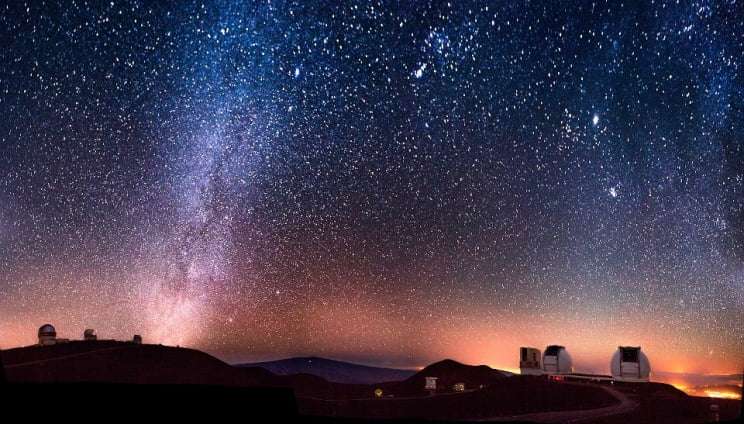
II. Finding the Best Places
Stargazing is a beloved pastime for many people, and one of the most important factors in having a successful stargazing experience is finding the perfect location. But with so many places to choose from, it can be overwhelming to decide where to go. In this post, we’ll provide tips for researching and selecting the best places for stargazing based on light pollution levels, accessibility and safety, and weather conditions.
Researching and Choosing Locations
Before embarking on your adventure, it’s important to research potential locations to ensure they meet your needs and preferences. Here are a few ways to research locations:
- Check online resources: There are many online resources available for stargazers, including dark sky maps, astronomy websites, and forums. These resources can provide information on the best stargazing locations in your area or around the world, as well as tips and recommendations from other stargazers.
- Talk to local experts: Local astronomers, park rangers, and outdoor enthusiasts can be a great resource for information on locations in your area. They can provide valuable insights on the best spots for stargazing, as well as any safety concerns or regulations to be aware of.
- Ask for recommendations: Reach out to friends, family, or online communities for recommendations on stargazing locations they have visited or heard about.
Factors to Consider When Selecting a Stargazing Spot
Once you have identified potential locations, it’s important to consider a few key factors to help you narrow down your options.
- Light pollution levels: Light pollution can significantly impact your experience by making it difficult to see stars and other celestial objects. Look for locations that are far from cities or other sources of light pollution, such as major highways or industrial areas. You can also use a light pollution map to help you find the darkest locations near you.
- Accessibility and safety: Consider how accessible the location is and whether it is safe to visit at night. Look for locations with clear paths and parking areas, and avoid locations that are too remote or difficult to access. Also, be sure to research any safety concerns or regulations related to the location, such as wildlife, weather conditions, or park rules.
- Weather conditions: Finally, be sure to check the weather forecast before heading out to your chosen stargazing location. Look for clear skies and calm weather conditions, as clouds and strong winds can impede your ability to see the night sky. You can use weather apps or websites to help you plan ahead and avoid any unexpected weather events.
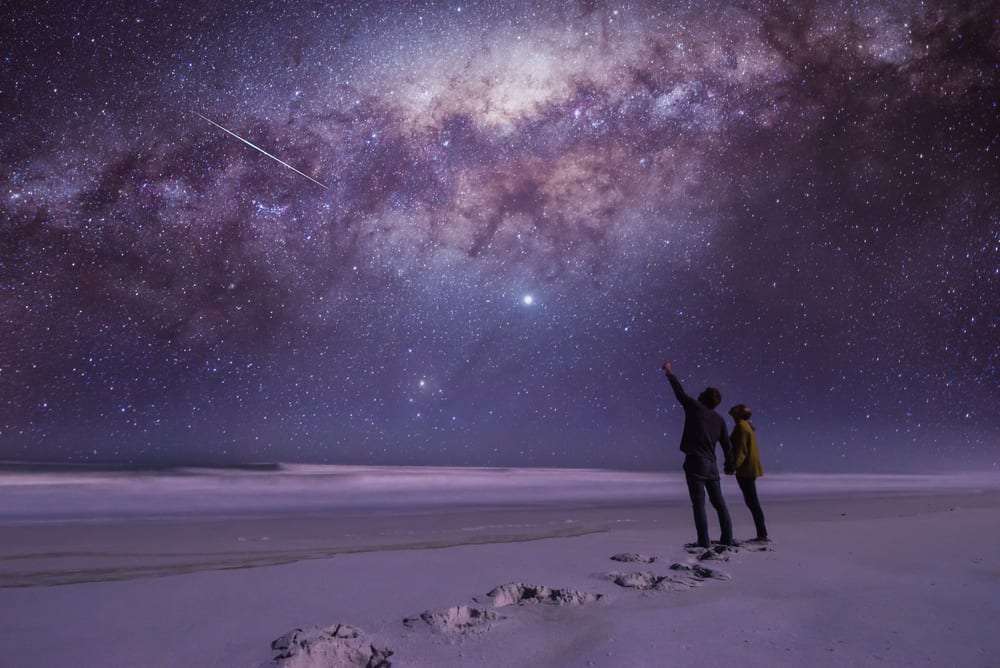
C. Top Spots Around the World
- Dark Sky Parks and Reserves: Dark Sky Parks and Reserves are areas that have been officially recognized for their exceptional stargazing opportunities. Some of the most notable Dark Sky Parks and Reserves include Yosemite National Park in the United States, Brecon Beacons National Park in Wales, and Aoraki Mackenzie International Dark Sky Reserve in New Zealand.
- Remote Locations with Minimal Light Pollution: Remote locations, such as the Atacama Desert in Chile or the Australian Outback, offer some of the best stargazing opportunities in the world. These areas are far away from sources of light pollution and offer clear, unobstructed views of the night sky.
- Historical Sites with Astronomical Significance: Many historical sites have astronomical significance and offer unique stargazing opportunities. For example, the Stonehenge in England and the Chaco Culture National Historical Park in the United States were both built with astronomical alignments in mind, making them ideal locations for stargazing.
Conclusion
In conclusion, finding the best locations requires careful research and consideration. By focusing on factors such as light pollution levels, accessibility and safety, and weather conditions, you can identify areas that offer the best stargazing opportunities. Whether you choose to visit a Dark Sky Park or Reserve, a remote
Stargazing is a magical experience that can transport you to a world beyond our own. To make the most of your adventure, it’s important to come prepared with the right equipment and knowledge. In this guide, we’ll cover the essential equipment and tips you need for stargazing success.
III. Preparing for Your Stargazing Adventure
Stargazing is a magical experience that can transport you to a world beyond our own. To make the most of your stargazing adventure, it’s important to come prepared with the right equipment and knowledge. In this guide, we’ll cover the essential equipment and tips you need for stargazing success.
A. Essential Equipment for Stargazing
- Telescopes and Binoculars: Telescopes and binoculars are essential tools. Telescopes allow you to see objects in greater detail, while binoculars offer a wider field of view. When selecting a telescope or binoculars, consider your level of experience and the objects you want to observe. Beginners may prefer a simpler, more portable telescope, while experienced stargazers may opt for a more advanced model.
- Star Charts and Smartphone Apps: Star charts and smartphone apps can help you navigate the night sky and locate celestial objects. Star charts are paper or digital maps that show the location of stars, planets, and other objects. Smartphone apps offer the same information, but in a more interactive format. Popular stargazing apps include SkySafari, Star Walk 2, and Night Sky.
- Warm Clothing and Blankets: Stargazing can get chilly, especially if you’re in a remote location with minimal light pollution. Be sure to dress in warm layers and bring blankets to stay comfortable throughout the night. Consider bringing hand warmers and foot warmers to keep your extremities warm as well.
B. Tips for Stargazing Success
- Adjusting Your Eyes to the Dark: When stargazing, it’s important to give your eyes time to adjust to the dark. Avoid looking at bright lights or screens for at least 30 minutes before stargazing. This will allow your pupils to dilate and improve your night vision.
- Using Red Lights to Preserve Night Vision: Red lights are less harsh on the eyes than white lights, making them ideal for stargazing. Use a red flashlight or cover your regular flashlight with red cellophane to preserve your night vision.
- Keeping Track of Time and Location: Stargazing can be a mesmerizing experience, but it’s important to keep track of time and location. Set an alarm or use a watch to keep track of time, and make note of your location in case you need to find your way back.
- Taking Photos of the Night Sky: Capturing photos of the night sky is a great way to remember your stargazing adventure. Use a tripod or stable surface to keep your camera steady, and experiment with different settings to capture the perfect shot. Consider using a remote shutter release to minimize camera shake.
Conclusion
It can be a truly magical experience. By coming prepared with the right equipment and knowledge, you can make the most of your stargazing adventure. With telescopes, star charts, warm clothing, and these tips for success, you’ll be ready to explore the night sky like never before.
IV. Celestial Events to Watch
Stargazing is a magical experience that allows us to appreciate the beauty of the night sky. However, there are certain celestial events that make it even more special. In this guide, we will explore the top celestial events that stargazers should watch out for, including annual meteor showers, planetary conjunctions, lunar eclipses and other lunar phenomena, and solar eclipses.
A. Annual Meteor Showers
Meteor showers are one of the most popular celestial events among stargazers. They occur when the Earth passes through a cloud of debris left behind by a comet or asteroid. The debris enters the Earth’s atmosphere and burns up, creating a stunning display of shooting stars. Some of the most popular annual meteor showers include the Perseids in August, the Leonids in November, and the Geminids in December. To get the best view of a meteor shower, find a dark and clear sky away from city lights and bring a blanket or chair to lie down and gaze at the sky.
B. Planetary Conjunctions
Planetary conjunctions occur when two or more planets appear close together in the sky. While conjunctions are relatively rare, they are a spectacular sight to behold. The most recent planetary conjunction that caught the world’s attention was the “Great Conjunction” of Jupiter and Saturn in December 2020, which saw the two planets come closer than they have in almost 800 years. To witness a planetary conjunction, look to the western or eastern horizon just after sunset or before sunrise.
C. Lunar Eclipses and Other Lunar Phenomena
Lunar eclipses occur when the Earth passes between the Sun and the Moon, casting a shadow on the Moon’s surface. This shadow causes the Moon to appear reddish-brown, earning it the nickname “blood moon.” Other lunar phenomena include the supermoon, which occurs when the Moon is closest to the Earth in its orbit and appears larger and brighter than usual. To see a lunar eclipse or other lunar phenomenon, find a clear view of the eastern or western horizon during the event’s designated time.
D. Solar Eclipses (with safety precautions)
Solar eclipses occur when the Moon passes between the Sun and the Earth, blocking the Sun’s rays and casting a shadow on the Earth’s surface. While solar eclipses are a rare and breathtaking sight, it is essential to take safety precautions when viewing them. Looking directly at the Sun during a solar eclipse can cause permanent eye damage. Instead, use a specially designed solar filter or watch the eclipse through indirect viewing methods, such as pinhole projection or through a solar telescope.
Conclusion
Stargazing offers a window to the wonders of the universe, and these celestial events are some of the most breathtaking sights to behold. Whether it’s a meteor shower, planetary conjunction, lunar eclipse, or solar eclipse, make sure to mark your calendar and prepare to witness the magic of the cosmos. Remember to find a dark and clear sky, bring the necessary equipment and safety precautions, and enjoy the show.
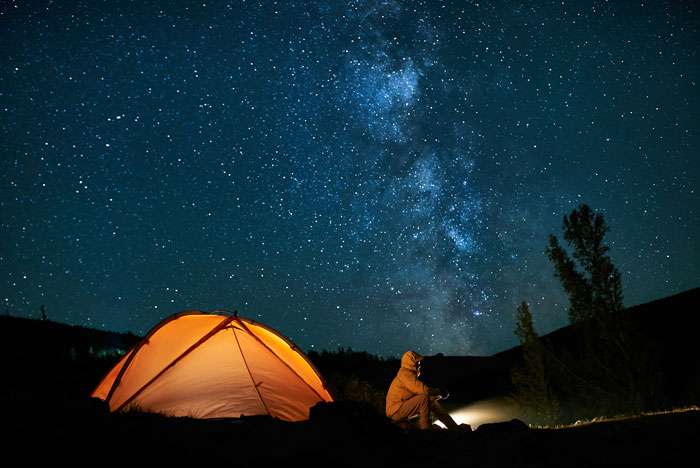
Conclusion
In this comprehensive guide, we have explored the beauty and wonder of stargazing and why it is a must-do activity for travelers. We have also covered how to find the best stargazing spots, how to prepare for your stargazing adventure, and which celestial events to watch out for.
To recap some of the key takeaways from this guide:
- Stargazing is a unique and memorable way to experience the beauty of the night sky while traveling.
- Researching and selecting the right stargazing location is crucial, considering factors such as light pollution, accessibility, and weather conditions.
- Essential equipment for stargazing includes telescopes, star charts, and warm clothing.
- To enhance your stargazing experience, try to adjust your eyes to the dark, use red lights to preserve night vision, and keep track of time and location.
- Some of the celestial events to watch out for include annual meteor showers, planetary conjunctions, and lunar eclipses.
Now that you have all the information you need, we encourage you to try stargazing on your next trip! Whether you are in a remote location with minimal light pollution or visiting a Dark Sky Park, take the time to appreciate the beauty of the night sky.
Don’t forget to share your stargazing experiences with us and other travelers! Use the hashtag #StarryNights and tag us in your social media posts. Let’s inspire more people to discover the beauty of the night sky and make unforgettable memories on their travels.
Thank you for reading this guide, and we hope it inspires you to explore the wonders of the night sky. Happy stargazing!
Check These websites for more information
- International Dark-Sky Association: https://www.darksky.org/
- NASA’s Night Sky Network: https://nightsky.jpl.nasa.gov/
- Astronomy Magazine: https://astronomy.com/
- Sky & Telescope: https://skyandtelescope.org/
- Space.com: https://www.space.com/
These websites can provide additional resources, insights, and inspiration for stargazing enthusiasts and travelers alike.
Read More Blogs Click Here

